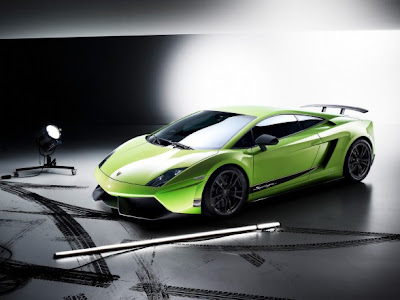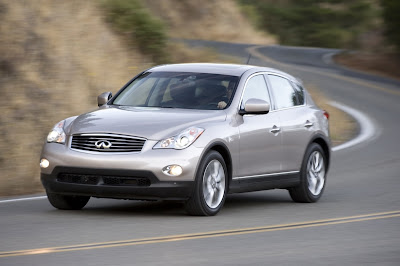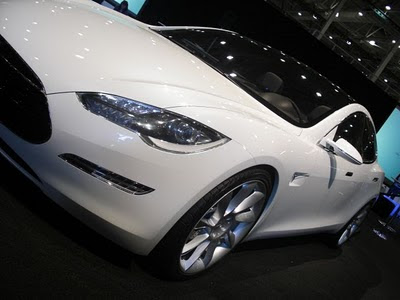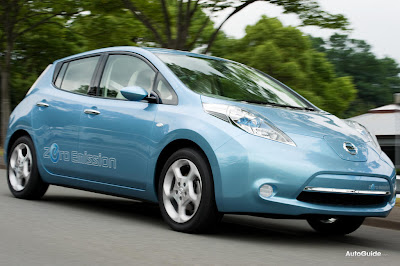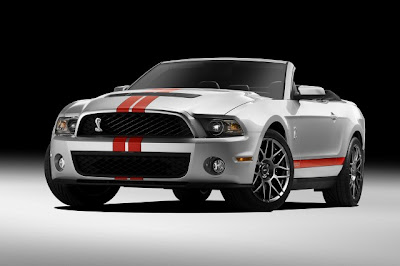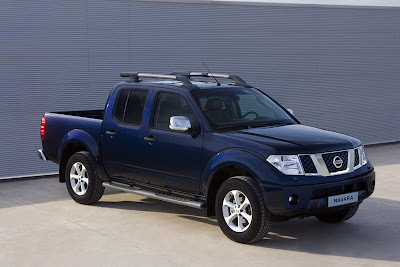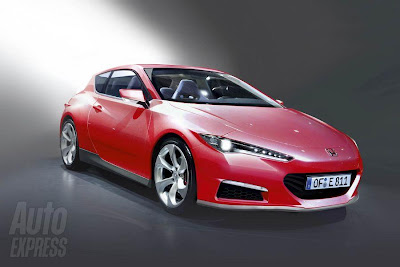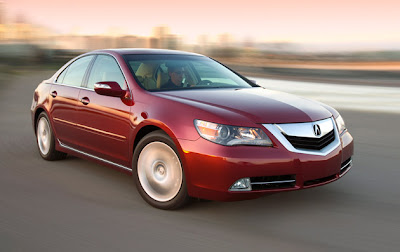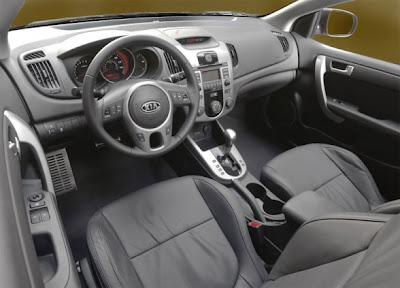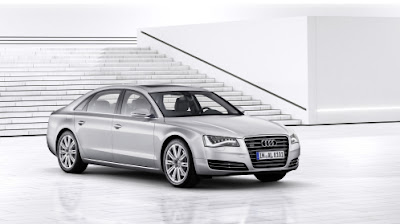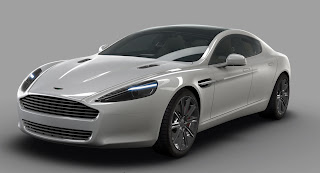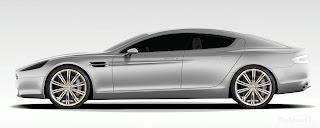Tuesday, August 31, 2010
Poetic Injustice: Little Big Men
Cody Webster stares into the camera like a man looking across an abyss of time for the soul he left behind. His shirt is as blue as the Atlantic Ocean. His eyes are as deep as the Pacific. His expression is mournful, like a Labrador retriever that’s been whipped with a fireplace poker by an intolerant master. As Webster speaks, the salt-and-pepper bristles of his goatee pierce the air like a thousand needles scraping at the skin of a balloon. All the while, Webster’s shoulders sag as if he spent his youth hunched over beneath the weight of enormous expectations, like Atlas holding up the world, and with good reason: Twenty-eight years ago, when he was 12, Webster was the star of a baseball team trying to win the Little League World Series and rescue the United States from a universal depression that wrapped around this country like a sticky vine. Today, at 40, Webster reminisces about those experiences in Little Big Men, a documentary that’s rife with the kind of overstatement and overwriting that you’ve been subjected to in this paragraph. My apologies.
Through 18 installments, ESPN Films’ “30 for 30” series has ranged from engrossing and artful to interesting yet unremarkable, but it never delivered an outright flop until now. At its best, like when we look into the eyes of a thoughtful Webster, Little Big Men is casually engaging. Alas, at its worst it’s tragic, and in this case that’s the norm. The film is overlong and underfed; it has the skeleton of a story but no meat on its bones. Journalistically speaking, it either buries the lead or fails to detect it. Dramatically speaking, it makes the mistake of trying to be profound when it could have succeeded just by being personal. Cinematically speaking, it’s a crime, which is to say that it isn’t cinematic in the least. Although the straight-ahead, eyes-into-the-camera testimonials of Webster and some of his teammates from Kirkland, Washington’s 1982 Little League team recall the work of Errol Morris, the rest of the film is more akin to Garrison Keillor’s Prairie Home Companion. It’s radio, and overly poetic radio at that, with enough pregnant pauses to make William Shatner impatient.
Or maybe it’s literature. Little Big Men sometimes feels as if it’s a movie adaptation of a previously written work, with the original prose left in. The narrator, speaking on behalf of directors Al Szymanski and Peter Franchella, articulates all the points that the camera should have made but failed to capture or, worse, never attempted to convey. As if to make up for the documentary’s lack of cinematic expressiveness, the narration is both incessant and excruciatingly repetitive, as in this indicative passage: “Boyhood dreams are supposed to fly high and far, soar beyond reality’s reach. But those innocent visions are haunted by a beast, a nightmare figure, lurking softly in the shadows.” To be honest, I didn’t know one could “lurk softly.” Then again, I was also under the impression that the word “whether” was a tool for exploring two alternatives, and if so that would render the following narration grammatically curious: “Funny how a lifetime eventually becomes nothing more than bits of memorabilia and mementos, whether it’s snapshots tucked away in a dusty corner, forgotten, there’s no slowing the sand once it begins to slip through the hourglass.” Is it me, or does it feel like something’s missing from that sentence? Not to mention, I don’t think it’s correct that “a lifetime eventually becomes nothing more than bits of memorabilia and mementos.” Of course, I don’t think this nugget of narration is accurate either: “Words work best when used as guideposts, in an oath or pledge. They chalk the lines that mark the field of fair play, pointing the way to what truly matters while compelling us to reach for what could be. But those same words can carry a cruel edge, become a reckless blade capable of damage unintended, when used to quantify the quality of an adolescent dream, catalog the content of a child’s heart, or to simply cause pain.” Huh?
It’s as if Szymanski, who based on the “30 for 30” website appears to be the principal director, is trying to make a minor moment in sports history into a biblical event by embossing each scene with consequence and verse. “As the ‘70s bled into the ‘80s, our country was in crisis,” the narrator says near the start of the film. “An oil crisis; gasoline rationed at the pump. A crippling recession. Professional athletes on strike. Olympic boycotts. U.S. citizens held hostage on foreign soil … America questioned her soul, her place in the world. The 1980 ‘Miracle on Ice’ was a powerful spark, a light in the dark, but our country needed more. Who would have thought that America would find inspiration running the base paths on a Little League diamond?” Indeed, who would have thought? But while America’s celebration of the home country’s victory over powerhouse Taiwan was very real, it’s misguided at best and disingenuous at worst for Little Big Men to imply it was something more, as if on par with the “Miracle on Ice,” or even close to it.
If Kirkland’s victory really was such a landmark moment in U.S. history – I was 5 at the time – Szymanski’s film doesn’t make a very compelling argument. And, actually, that’s a trend. This is a documentary that suggests it was wrong for Cody Webster to become the face of the 1982 Little League team, and then it goes ahead and makes Cody Webster the face of the film. It suggests that people were foolish to think that Webster’s dominance at 12 was a forecast of his athletic future as an adult, and yet Webster’s story is worth telling now only because he didn’t make it as a professional athlete; if he had, the movie couldn’t suggest that he was scarred by his time in the spotlight. Of course, now that I’ve mentioned it, Webster doesn’t seem to be scarred anyway, and that's also a problem. His former teammates cry for him. The film all but plays “Taps” for his lost innocence. But Webster looks back on his childhood and says he wouldn’t change a thing. “I was really good when I was 12,” he says. “I wasn’t really good when I was 18. That’s just the true reality of it all, and I was good with that.”
See, that’s profound. The soul of this film is right there in Webster’s face, in his voice, in his personal account of victory and the impossible expectations and taunts from parents he endured as a result. But Little Big Men talks too much to really hear Webster. It’s too busy building trite drama. (“They represented the United States in a game that no one gave them a chance to win. No one, except themselves.”) It’s too busy waxing poetic. (“Memories are like a morning fog, rising up at random moments to hang thick and real before slipping away under the sun’s demand for yet another day.”) It’s too busy using a few dozen words to describe what any sports fan knows by heart. (“This is where boyhood dreams run the base paths, slide into home and maybe, just maybe, raise a trophy and shout, ‘We did it! We won! We’re the best in the world!’”) Little Big Men fails because of an unwillingness to allow this Little League drama to ever feel small. Its filmmakers are too busy writing the story to spot it in front of them.
Little Big Men premieres tonight on ESPN at 8 pm ET, and will rerun frequently thereafter. The Cooler will be reviewing each film in the “30 for 30” series upon its release. See the archive.
Wednesday, August 25, 2010
Lamborghini Gallardo LP 570-4 Superleggera
Even more dynamic, lighter, more powerful and stunning – the Lamborghini Gallardo LP 570-4 Superleggera is the new top model in the Gallardo line-up. Its evocative “superlight” badge refers to a driving machine of true sporting character and describes a high-performance and lean automotive athlete.
Compared with the already lean Gallardo LP 560-4, the weight of the Gallardo Superleggera has been trimmed by 70 kilograms (154 lb). The super sportscar from Sant’Agata Bolognese boasts a dry weight of no more than 1340 kilograms (2954 lb) – the lightest road-going model in Lamborghini’s range, and a new arrival in one of the most exclusive market niche segments.
One key factor is the exterior and interior components made from carbon-fiber. Carbon-fiber is ideal for the manufacture of sportscars as its use allows for weight reduction and improved mechanical features. The car’s performance is thus enhanced thanks to a better weight-to-power ratio and reduced total mass, which means that CO2 emissions are also lower. Lamborghini has been at the forefront in this material’s application for many years, and now the brand is extending its leadership even further.
The V10 power unit with 5.2 liters (317,6 cu in) of displacement generates 419 kW (570 CV*) in the Gallardo Superleggera. This puts the weight-to-power ratio of the new top model at only 2.35 kilograms (5.18 lb) per CV and guarantees breathtaking performance. The Gallardo LP 570-4 Superleggera handles the dash from zero to 100 km/h (0-62 mph) in 3.4 seconds and flies past the 200 km/h (124 mph) mark only 10.2 seconds later, ultimately reaching 325 km/h (202 mph). The engine with “Iniezione Diretta Stratificata” gasoline direct injection also boasts an impressive degree of efficiency. Its fuel consumption and CO2 emissions have been reduced by 20,5 percent compared to the previous model.
The Gallardo Superleggera is an uncompromising driving machine. Its running gear, with its mighty braking system, has a dedicated and exceptionally precise set-up, while its 19-inch wheels, Pirelli P Zero Corsa, clad in Pirelli sports rubber, are extremely light. The Lamborghini Gallardo LP 570-4 Superleggera brings a whole new meaning to the term “super sportscar”.
2009 Infiniti EX35
2009 Infiniti EX35 is pleasant and easy to drive. That’s either good or bad, depending on if you like that or not. Handling is great though – it has very little body roll for its size, and is very nimble through the turns. This is one of the very few small SUVs that you can take on a winding road at high speed and still have fun without worrying about tipping over. Suspension and ride is comfortable, and the 297 hp 3.5-liter V6 is the perfect engine for this vehicle. You always have plenty of power when you need it, and throttle response is very smooth. Fuel economy is average at 16/23 for the AWD model; I averaged 19.7 mpg under aggressive driving.
The EX35’s only transmission is a 5-speed automatic with manual shift mode, downshift rev matching, and Drive Sport mode. It’s a good transmission, but acts a bit like a CVT, which is strange. It holds revs depending on your driving style (that would be the Adaptive Shift Control,) and when it does shift, you don’t feel it. It’s a very refined system that makes the EX35 very smooth and drivable, without any sort of jerkiness or excitement in the shifting.
Tuesday, August 24, 2010
2012 Tesla Model S - 25 Aug, 2010
2012 Tesla’s Model S will rival other EVs, like the plug-in hybrid Fisker Karma, plus traditional luxury vehicles, like the BMW 5-Series and Mercedes-Benz E-Class. The 2012 Tesla Model S will be Tesla’s second model, joining the Roadster sports car, with production slated for late 2011.
Tesla has yet to announce an official on-sale date for the Model S, but the sporty EV sedan will retail from $49,900 after a $7,500 tax credit when it finally rolls into dealerships. Tesla says Model S customers will be able to order the car with a 160-mile, 220-mile, or 300-mile battery pack. It’s not clear how the price will be affected by the range options.
But where the 2012 Tesla Model S really shines is in its performance. The electric sedan will be offered with a range of up to 300 miles, and a QuickCharge system taking only 45 minutes to top off the EV’s battery, given the correct electrical connection. For those looking for even faster fueling, the 2012 Tesla Model S’ battery can also be swapped out in just five minutes, making it compatible with Shai Agassi’s Better Place initiative. The 2012 Tesla Model S’ door handles even retract for improved aerodynamics, proving Tesla really has an eye for efficiency.
Despite its 3,825 pound curb weight and single-speed transmission, the Model S can make the sprint from zero to 60 mph in 5.6 seconds, crossing the quarter-mile stripe in 14 seconds flat. Give the Model S a longer track and it will top out at 120 mph.
Ferrari 599 Hybrid
Ferrari showed off a new prototype for their vision of hybrids going forward. The Ferrarri 599 HY KERS concept is meant to give an idea of how Ferrari is looking to adopt hybrid and other green technology over the next four years.
With tough new CO2 emissions in the works, Ferrari is looking to cut fuel by up to 40% over the next few years, or risk being squeezed out. They plan on having green technology across their entire line-up by 2015.
The spokesperson noted the concept would cost twice as much as the £207,000 petrol 559 GTB Fiorano on which the concept is based. But, the price should come down to below £300,000 in the next four years.
The HY KERS concept uses the Formula One developed system called Kinetic Energy Recovery System (KERS). The system allows for regenerative braking, but will not run the vehicle on electric power alone.
The two-seater comes with a 6.0 liter V12 mated to an electric motor powered by lithium ion batteries. The prototype has a top speed of 200 mph and can go from 0-60 in 3.5 seconds. That's faster than the standard version. It can reach 125 mph in 10.4 seconds and has a top speed of 200 mph.
But that extra power also comes at greater efficiency, with a 35% improvement in CO2 emission (down to 270 g/km) and they estimate a fuel efficiency of 25 mpg (up from 16 mpg).
The battery pack is set low in the floor, which lowers the center of gravity, allowing for better 'cornering dynamics.' They also do not affect interior space of functionality.
Ferrari painted the concept green, making it stand out from the rest of the Ferrari line-up. The company is hoping this is the leading edge of their goal of reducing fuel use in their entire line-up by at least 40%.
Nissan LEAF Electric Car - 25 August, 10
Nissan has just unveiled a new zero emissions vehicle that is slated to go on sale in Japan, Europe and the United States next year. Called the LEAF, this C-segment (sub-compact) car is powered by an electric motor and lithium-ion battery packs. Nissan says it will be able to drive 100 miles on a single charge. The batteries will be able to be charged up to 80 percent in less than 30 minutes with a special quick charger, or in roughly eight hours through a standard 200V outlet. Nissan says that through extensive research the 100 mile range will be suitable for 70 percent of car buyers.
Output from the lithium-ion battery packs is rated at 80kW/280Nm, (107-hp and 207 ft-lbs of torque), which should make this sub-compact a sporty little car.
Pricing has yet to be released but Nissan aims to give the LEAF an MSRP competitive with well-equipped C-segment cars. That should put it near the $20,000 mark. The car will also qualify for government rebates and tax incentives desigend to help promote the sale of fuel-efficient cars.
“Our car had to be the world’s first, medium-sized, practical EV that motorists could afford and would want to use every day. And that’s what we’ve created. The styling will identify not only Nissan LEAF but also the owner as a participant in the new era of zero-emission mobility,” said the LEAF product boss Masato Inoue.
The first LEAFs will be built at Nissan’s plant in Oppama, Japan with plans to also start production soon at the company’s Smyrna, Tennessee plant. The LEAF is the first of three electric vehicles that Nissan plans to launch in the next few years.
”The Nissan LEAF is a tremendous accomplishment – one in with all Nissan employees can take great pride,” said Nissan President Carlos Ghosn. “We have been working tirelessly to make this day a reality – the unveiling of a real-world car that has zero – not simply reduced – emissions. It’s the first step in what is sure to be an exciting journey – for people all over the world, for Nissan and for the industry.”
The New 2011 Ford Shelby GT500 has a surprise in store
The new 2011 Ford Shelby GT500 has a surprise in store for true performance enthusiasts – an optional SVT Performance Package. One lap around the racetrack, and drivers will feel the difference.
Data show the 2011 coupe with the SVT Performance Package is 3.0 seconds faster per lap than the 2010 Ford Shelby GT500 on a 2.3-mile test track. Cars with the optional package will be able to pull 1.0 lateral g, with stopping distances improved by 7 percent versus the base 2011 Shelby.
“More and more enthusiasts are putting their cars on the track to have some fun,” said Carroll Shelby, founder of Shelby American. “It’s a great way to enjoy the performance of your car in a safe environment. No one likes to run at the back of the field, so a track-oriented package is a smart option for the serious Ford Shelby GT500 owner.”
Tires make the difference
The SVT Performance Package features the first application of the all-new Goodyear Eagle F1 SuperCar G: 2, a tire that offers superb dry traction and precise handling, complete with a high-performance tread compound with more grip. SVT engineers worked directly with Goodyear to develop the new compound, and it’s only available on the Ford Shelby GT500. The tire is unidirectional, corner-specific – meaning the directional tread must match its specific location.
“We wanted to couple the improved weight distribution and the improved handling of the vehicle with the new tire, and with that offer the customer one of the most advanced summer tires from a manufacturer,” said Jamal Hameedi, SVT chief nameplate engineer. “That led us down a road to the new tire. It’s instantly recognizable with an all-new tread pattern and construction.”
The new ultra-high-performance compound is made of a proprietary blend of race-derived carbon black and high-stiffness polymers and resins that help deliver enhanced wet and dry handling performance on both the road and track. Asymmetrical, directional tread designs with massive tread blocks on the outboard side of the tire help enhance dry cornering grip. Sweeping Aquachannel™ grooves on the inboard side of the tread help move water. An innovative multi-radius mold shape offers precise handling and smooth, even wear.
“These tires are as close as you can get to a race car tire,” said Eric Zinkosky, SVT technical specialist. “We have a tire that’s way more capable, with better grip, is firmer and more race-oriented. From there, we tuned the chassis around it. The tires told us what we had to do.
“We took some lessons from the Shelby KR program and applied them to these tires,” he added. “That was our first attempt at a similar compound, and we learned a lot and rolled those lessons into the new Shelby to provide an even better tire.”
Nineteen-inch forged-aluminum wheels in the front, which are 4.7 pounds lighter than the base Shelby GT500’s, complement the all-new wider 265/40R-19 front tires. New 20-inch forged-aluminum wheels at the rear are 2.8 pounds lighter than the standard 19-inch wheel, and the new 3.73 rear axle ratio takes advantage of the new larger rear wheels and tires.
2011 Nissan Navara : Geneva Motor Show
Europe’s best selling pick-up and its SUV sibling since its launch – the 2010 Nissan Navara have been given a mid-term boost with a number of significant enhancements designed to keep them at the top.
Among the changes are the arrival of a new and technically advanced 3.0-litre V6 diesel engine; important improvements to the popular 2.5-litre dCi diesel; greater levels of passive safety; new equipment including the availability of a state-of-the-art Nissan Connect Premium touch-screen satellite navigation system, a premium Bose sound system and a rear view camera; enhanced interior quality and a number of styling changes to keep Navara and Pathfinder looking sharp.
Launched at the Geneva Motor Show, the improved new-look Nissan Navara models are due on sale across Europe in April 2010. They will be followed two months later by the new 3.0-litre V6 diesel flagship models.
The new direct injection V6 turbodiesel has been developed by the Renault Nissan Alliance to deliver high levels of performance with strong economy, competitive emissions and class-leading refinement.
The key element of the new V6 – with an unusual vee angle of 65 degrees – is the material chosen for the engine block. Alliance development engineers chose Compacted Graphite Iron (CGI), a material that offers all the benefits of cast iron, including high levels of stiffness and noise absorption, without the weight penalty. And while CGI is heavier than a pure alloy block there is no need to add stiffening ribs or extra sound deadening material so the weight gain is comparatively modest.
Using experience gained during the development of the Alliance 2.0-litre dCi engine – and carrying over some technology – accelerated development of the new V6, but number of significant changes have been made to the hardware for the V9X. The combustion chamber design, for example, has been optimised to improve the balance between emission levels and fuel efficiency.
The compression ratio has been lowered to 16:1 to benefit not just economy and emissions but also noise, vibration and harshness (NVH), while internal engine friction is reduced by the use of ultra smooth components such as the micro-finished forged steel used for the crankshaft.
2010 Mazda CX-7 -- Mazda Cars
The Mazda CX-7 2010
Two Mazdas will make their Canadian debut at the 2009 Canadian International AutoShow. The first is the 2010 Mazda CX-7, which receives a new engine option: a 161 horsepower, naturally aspirated 2.5 litre four-cylinder that is also found under the hood of the 2009 Mazda6 and 2010 Mazda3. The second is the refreshed 2009 Mazda MX-5, which receives updated styling in addition to engineering and equipment upgrades. Mazda's stand will also include the redesigned 2010 Mazda3, in both 4-door sedan and 5-door hatchback body styles.
2010 Mazda CX-7
For the 2010 model year the CX-7 is the recipient of an exterior and interior styling refresh to complement a host of engineering refinements. Leading the way is a new engine option. Making its first appearance under the hood of the CX-7 is Mazda's all-new naturally aspirated DOHC 16-valve 2.5 litre MZR four-cylinder that produces 161 horsepower at 6000rpm and offers maximum torque of 161 lb-ft at 3500rpm. It is available with Front-Wheel Drive coupled to a 5-speed automatic transmission. Continuing as the top engine option is the familiar MZR 2.3L DISI Turbo (direct injection DOHC 16-valve four-cylinder) engine. Output remains the same, 244 horsepower at 5,000 rpm with 258 lb-ft of torque at 2,500 rpm.
A theme of refinement carries over to the 2010 CX-7's Mazda-derived platform architecture by incorporating improvements in body rigidity, lower noise, vibration & harshness (NVH) levels as well as reduced wind noise. The exterior design of the 2010 CX-7 features revised front and rear fascias with the front adopting the larger five-point grille design similar in appearance to recently redesigned RX-8, MX-5 and Mazda3.
On the inside the 2010 CX-7 receives higher quality materials, a new design for the gauges including blackout meters that feature three-dimensional dials and a 3.5 inch super-twisted nematic (STN) monochrome and 4.1 inch thin-film transistor (TFT) colour Multi Information Display (MID) positioned at the top of the instrument panel to provide the driver with enhanced information. Bluetooth compatibility provides a wireless connection for Bluetooth compatible mobile phones and portable audio devices. The front seats gain a three-position memory function for the driver's seat and a power adjustable recliner for the passenger's seat. A Blind Spot Monitoring System, similar to the one found on the Mazda6 & CX-9 is now available to assist the driver in avoiding collisions with other vehicles when changing lanes or merging with traffic.
Final specifications, pricing, trim levels and options will be announced at a later date closer to when the 2010 CX-7 goes on sale.
2009 Mazda MX-5
Twenty years ago Mazda re-created the segment for affordable, fun-to-drive roadsters by introducing the MX-5 Miata. In those twenty years the MX-5 has earned the title of best selling roadster in the world. For 2009, the third-generation MX-5 retains the fun-to-drive qualities of the original and receives updated styling in addition to engineering and equipment upgrades.
Mazda Canada will continue to offer the MX-5 in three versions: GX, GS and GT, all powered by an all-aluminum, DOHC, 167 horsepower, 2.0-litre, four-cylinder engine with variable valve timing. The 2009 MX-5 GX is ideal for driving enthusiasts looking for an affordable sports roadster and includes a 5-speed manual transmission and 16-inch alloy wheels with 205/50R16 tires.The MX-5 GS & GT include a 6-speed manual transmission, 17-inch alloy wheels with 205/45/17 performance tires, a limited slip differential (LSD), dynamic stability control (DSC), strut tower bar, and sport-tuned suspension with BilsteinÆ shock absorbers. The GT offers a dash of luxury as it comes well equipped with an assortment of premium features such as Xenon (HID) headlights, BoseÆ audio system, Sirius satellite radio, BluetoothÆ with Audio Profile, auto-dimming rear-view mirror, leather seats with adjustable heating, and smart keyless entry system.
For those that prefer the benefit of a closed coupe when the roof is up, the Power Retractable Hard Top is offered as an option on the GS or standard equipment on the GT. A few new standard features find their way onto all trim levels including side impact airbags, MP3 & WMA functionality on the CD player, a door pocket insert, and soft feel centre arm rest.
2010 Mazda3
Launched in 2003 as a 2004 model, the compact Mazda3 has become one of the best selling cars in Canada. Worldwide, there have been over 2 million Mazda3's built and since its introduction the Mazda3 has earned more than 90 automobile awards around the globe including the highly coveted 2004 Canadian Car of the Year.The definitive fun-to-drive compact, the 2010 Mazda3 looks to build upon that success with the style, functionality,safety, and economy to once again lead its class. Trim levels for the 2010 Mazda3 remain identical to the outgoing model, GX, GS and GT, but that's about where the similarities end.
The entry-level GX and GS sedan, as well as the unique to Canada Sport GX, are powered by an economical 2.0-litre, four-cylinder, 16-valve, DOHC engine that produces 148 horsepower mated to a five-speed manual transmission. The 2010 Mazda3 Sedan GT and Mazda3 Sport GS/GT trims are powered by the all new 167 horsepower, 2.5 litre four-cylinder and six-speed manual gearbox taken from the Mazda6.For 2010, there are more standard and optional features rarely seen in this segment of the market, such as a Traction Control System (TCS) with Dynamic Stability Control (DSC), exterior mirror mounted turn signals, colour Multi Information Display (MID) with Navigation, smart keyless entry with Smart Start, a 10-speaker BOSEÆ audio system with Centerpoint and Audio Pilot, Sirius satellite radio, and an Adaptive Front Lighting System with self-levelling Bi-Xenon headlights.
Rounding out the Mazda display in Toronto is the full complement of Mazda's award-winning vehicles including the 2009 Mazda5 and 2009 Mazda B-series 2300 pickup both of which were recently awarded ecoENERGY awards as the most fuel efficient vehicles in their classes (van and pickup truck respectively) by Natural Resources Canada. The 2009 Mazda6, recently named "Best New Family Vehicle $22,000-$35,000" by the Automotive Journalists Association of Canada (AJAC) will also be on display as well as the RX-8, CX-9 and Tribute.
Two Mazdas will make their Canadian debut at the 2009 Canadian International AutoShow. The first is the 2010 Mazda CX-7, which receives a new engine option: a 161 horsepower, naturally aspirated 2.5 litre four-cylinder that is also found under the hood of the 2009 Mazda6 and 2010 Mazda3. The second is the refreshed 2009 Mazda MX-5, which receives updated styling in addition to engineering and equipment upgrades. Mazda's stand will also include the redesigned 2010 Mazda3, in both 4-door sedan and 5-door hatchback body styles.
2010 Mazda CX-7
For the 2010 model year the CX-7 is the recipient of an exterior and interior styling refresh to complement a host of engineering refinements. Leading the way is a new engine option. Making its first appearance under the hood of the CX-7 is Mazda's all-new naturally aspirated DOHC 16-valve 2.5 litre MZR four-cylinder that produces 161 horsepower at 6000rpm and offers maximum torque of 161 lb-ft at 3500rpm. It is available with Front-Wheel Drive coupled to a 5-speed automatic transmission. Continuing as the top engine option is the familiar MZR 2.3L DISI Turbo (direct injection DOHC 16-valve four-cylinder) engine. Output remains the same, 244 horsepower at 5,000 rpm with 258 lb-ft of torque at 2,500 rpm.
A theme of refinement carries over to the 2010 CX-7's Mazda-derived platform architecture by incorporating improvements in body rigidity, lower noise, vibration & harshness (NVH) levels as well as reduced wind noise. The exterior design of the 2010 CX-7 features revised front and rear fascias with the front adopting the larger five-point grille design similar in appearance to recently redesigned RX-8, MX-5 and Mazda3.
On the inside the 2010 CX-7 receives higher quality materials, a new design for the gauges including blackout meters that feature three-dimensional dials and a 3.5 inch super-twisted nematic (STN) monochrome and 4.1 inch thin-film transistor (TFT) colour Multi Information Display (MID) positioned at the top of the instrument panel to provide the driver with enhanced information. Bluetooth compatibility provides a wireless connection for Bluetooth compatible mobile phones and portable audio devices. The front seats gain a three-position memory function for the driver's seat and a power adjustable recliner for the passenger's seat. A Blind Spot Monitoring System, similar to the one found on the Mazda6 & CX-9 is now available to assist the driver in avoiding collisions with other vehicles when changing lanes or merging with traffic.
Final specifications, pricing, trim levels and options will be announced at a later date closer to when the 2010 CX-7 goes on sale.
2009 Mazda MX-5
Twenty years ago Mazda re-created the segment for affordable, fun-to-drive roadsters by introducing the MX-5 Miata. In those twenty years the MX-5 has earned the title of best selling roadster in the world. For 2009, the third-generation MX-5 retains the fun-to-drive qualities of the original and receives updated styling in addition to engineering and equipment upgrades.
Mazda Canada will continue to offer the MX-5 in three versions: GX, GS and GT, all powered by an all-aluminum, DOHC, 167 horsepower, 2.0-litre, four-cylinder engine with variable valve timing. The 2009 MX-5 GX is ideal for driving enthusiasts looking for an affordable sports roadster and includes a 5-speed manual transmission and 16-inch alloy wheels with 205/50R16 tires.The MX-5 GS & GT include a 6-speed manual transmission, 17-inch alloy wheels with 205/45/17 performance tires, a limited slip differential (LSD), dynamic stability control (DSC), strut tower bar, and sport-tuned suspension with BilsteinÆ shock absorbers. The GT offers a dash of luxury as it comes well equipped with an assortment of premium features such as Xenon (HID) headlights, BoseÆ audio system, Sirius satellite radio, BluetoothÆ with Audio Profile, auto-dimming rear-view mirror, leather seats with adjustable heating, and smart keyless entry system.
For those that prefer the benefit of a closed coupe when the roof is up, the Power Retractable Hard Top is offered as an option on the GS or standard equipment on the GT. A few new standard features find their way onto all trim levels including side impact airbags, MP3 & WMA functionality on the CD player, a door pocket insert, and soft feel centre arm rest.
2010 Mazda3
Launched in 2003 as a 2004 model, the compact Mazda3 has become one of the best selling cars in Canada. Worldwide, there have been over 2 million Mazda3's built and since its introduction the Mazda3 has earned more than 90 automobile awards around the globe including the highly coveted 2004 Canadian Car of the Year.The definitive fun-to-drive compact, the 2010 Mazda3 looks to build upon that success with the style, functionality,safety, and economy to once again lead its class. Trim levels for the 2010 Mazda3 remain identical to the outgoing model, GX, GS and GT, but that's about where the similarities end.
The entry-level GX and GS sedan, as well as the unique to Canada Sport GX, are powered by an economical 2.0-litre, four-cylinder, 16-valve, DOHC engine that produces 148 horsepower mated to a five-speed manual transmission. The 2010 Mazda3 Sedan GT and Mazda3 Sport GS/GT trims are powered by the all new 167 horsepower, 2.5 litre four-cylinder and six-speed manual gearbox taken from the Mazda6.For 2010, there are more standard and optional features rarely seen in this segment of the market, such as a Traction Control System (TCS) with Dynamic Stability Control (DSC), exterior mirror mounted turn signals, colour Multi Information Display (MID) with Navigation, smart keyless entry with Smart Start, a 10-speaker BOSEÆ audio system with Centerpoint and Audio Pilot, Sirius satellite radio, and an Adaptive Front Lighting System with self-levelling Bi-Xenon headlights.
Rounding out the Mazda display in Toronto is the full complement of Mazda's award-winning vehicles including the 2009 Mazda5 and 2009 Mazda B-series 2300 pickup both of which were recently awarded ecoENERGY awards as the most fuel efficient vehicles in their classes (van and pickup truck respectively) by Natural Resources Canada. The 2009 Mazda6, recently named "Best New Family Vehicle $22,000-$35,000" by the Automotive Journalists Association of Canada (AJAC) will also be on display as well as the RX-8, CX-9 and Tribute.
2011 Honda Civic - Honda Cars
The new 2011 Honda Civic is going to be a legend in its class. It is destined to make a difference in the hatchback class. It is set to hit the Honda showrooms in 2010.
The pictures in the gallery section just show how the Japanese auto maker has put together the skills of mastermind class, to create this distinct vehicle. The model is more bold and stylish, and features a new wave in auto making. Honda has worked hard to create this model, and it will definitely create some fierce competition between its competitors.
The model is mainly aimed at the large amount of young drivers, who want style and class all in one. The vehicle will be like a modified vehicle, with the three door model sitting with a lowered suspension, darker interior and deep sculpted seats.
2010 Jaguar XJ - Jaguar Cars
Jaguar XJ is not only enhanced in terms of design, technology and performance it is also the most environmentally responsible model as well! Recently Britain’s VCA (Vehicle Certification Agency) audited and approved t imhe new XJ’spact on environment over a specified lifetime (200,000km), including the materials used, material processing, assembly and transport during manufacturing. Jaguar is now recognized as a manufacturer with great efforts to reduce its carbon footprint.
Paul Markwick, VCA CEO, said,. “I’m delighted to present this certificate to the team at Jaguar; I know it marks the culmination of a lrot of had work. Environmental issues are rightly high on the business agenda so it is great to see industry embracing initiatives such as Life Cycle Assessment, This demonstrates a clear commitment to the management of environmental impacts at all stages of the product life cycle, from concept through to the end of vehicle life. VCA has supported the automotive industry with its certification needs globallyan 3 for more th0 years and this extensive knowledge of the sector means that our audit teams understand the complexities of the vehicle design and construction process and the legislation supporting this”.
A key focus for future development will be the unique lightweight aluminium vehicle architecture which lies at the heart of the latest Jaguar XJ.
Based on aerospace technology, the aluminium body structure offers a number of major advantages compared to a conventional steel shell, including a substantial cut in the energy required for manufacturing and a significant reduction in weight.
The aluminium body in the new XJ uses up to 50 percent recycled material, with a plan to increase this to 75 percent. Body panels made from recycled material use only five percent of the energy required for new aluminium, equating to a potential saving of three tonnes of CO2 per vehicle compared to a bodyshell made from new aluminium.
The XJ’s aluminium structure also saves around 150kg compared to an equivalent steel body, allowing the use of smaller, more fuel efficient engines with no compromise to performance. Equipped with the 3.0-litre AJ-V6D turbodiesel, the XJ delivers an impressive combined economy figure of 40.1mpg and CO2 emissions of 184g/km.
“Jaguar has been at the forefront of developing lightweight aluminium bodies for the past decade, and the lifecycle assessment will help us find new opportunities to enhance their environmental benefits,” says Mark White, Chief Technical Specialist Body Engineering.
“With a holistic approach, which takes account of the energy required during manufacturing, the advantages of an aluminium structure are particularly compelling. Compared to a typical steel-bodied competitor, we estimate that the new Jaguar XJ can cut CO2 emissions by six tonnes per vehicle over the whole lifecycle.
2011 ferrari enzo II
Considered by many enthusiasts as the ultimate modern Ferrari, the limited-edition Enzo’s replacement will be a tough act to follow up for the Italian automaker. The second-generation Enzo, also named after the marque’s illustrious founder, promises to take performance – and, surprisingly, efficiency – to a new level.
Like the original Enzo, the car’s successor will be a range-topping supercar aimed at immortalizing the legendary founder of the brand. Available only to select current Ferrari owners, the next-generation Enzo will serve as the brand’s performance and technology showcase.
Based – at least in concept – on the Ferrari Millechili show car (though the production Enzo replacement won’t carry that name), the performance car will be loaded with the technology learned from years of Formula 1 experience.
Expected to be powered by a mid-mounted V8 engine, rather than the Maserati-based V12 that motivated the Enzo, power should easily exceed 700 horsepower. Though fuel efficiency is hardly a Ferrari selling point, the car must conform to more recent European Union standards, meaning a new emphasis has been placed on reducing consumption. It has been rumored that Ferrari will use twin-turbocharging to make the most out of a smaller-displacement (think under 6 liters) V8 engine.
Key to addressing the fuel economy issue is a significant weight and size reduction, which should bring the car well down from the just-over 3,000 lbs. of its predecessor; rumors out of Ferrari’s Maranello headquarters indicate that weight could approach 2,200 lbs. Improved aerodynamics, including adjustable front and rear spoilers, will not only help the new Enzo stick to the road at maximum speeds, but it will also ensure reduced fuel consumption.
Its platform could go one of two ways: Either a heavily-modified version of the FXX race car’s architecture – itself a variation of the road-going Enzo – or a slightly longer derivative of the F430’s aluminum space frame.
Production will probably be at least as limited as the original Enzo, meaning no more than 400 of the 1 million Euro-plus supercars will emerge from Maranello when it goes on sale in over a year’s time.
Missing in Action: Jordan Rides the Bus
When the greatest player of a sport retires, it’s memorable. When the greatest player of a sport retires at the height of his athletic abilities so that he can take a stab at another sport he hasn’t played since high school, it’s momentous. And yet somehow Michael Jordan’s one-year fling with professional baseball is practically forgotten, regarded 16 years later like some trivial footnote, like the deleted scene of a classic film, as if it didn’t count. But it did. So, in Jordan Rides the Bus, the latest entry in ESPN Films’ “30 for 30” series, Ron Shelton chronicles the impact of Jordan’s sudden and brief career switch on the NBA, on Nike, on the Birmingham Barons minor league baseball team, on a bus driver, on a real estate agent and on a bar owner. Meanwhile, Shelton charts the evolution of Jordan’s baseball skills, explores theories about the motivations for Jordan’s dalliance with the sport and brings in media talking-heads to reevaluate not just Jordan’s baseball skills but also their own coverage of his brief career. At 50 minutes, Jordan Rides the Bus is a thorough documentary. Alas, it’s as emotionless as a Wikipedia page. Because the one thing Shelton’s documentary doesn’t convey is what all of the above meant to Michael Jordan.
It’s not for lack of effort. Shelton tries. Oh, how he tries! His documentary is heavy with archival Jordan interviews in which the sports icon insists he’s playing baseball to honor his murdered father and because he’s lost his motivation to play basketball, having run out of things to prove after winning three consecutive NBA titles. But these are all sound bites, mostly pulled from press conferences, spoken by an experienced interviewee. They are less revealing of a man in the moment than of a man under the spotlight who is used to the attention. These clips provide no sense of what Jordan thought privately. They provide no sense of what he thinks now. They don’t even provide a sense of what Jordan might have thought semi-recently. In Jordan Rides the Bus we hear a lot of Jordan’s voice thanks to interview and television commercial audio that’s repurposed as voiceover, but since the original sources aren’t cited, it’s hard to put Jordan’s words into context, hard to trust his accounts. Just because Jordan didn’t sit down for an exclusive interview doesn’t mean there should be such a void. After all, Steve James didn’t need an official sitdown with Allen Iverson to give us a glimpse of his subject’s soul in No Crossover. And so it is that Shelton’s film reminds more of two other basketball-related docs in the “30 for 30” series: Without Bias and Guru of Go. Jordan is so distant from this picture, it’s as if he’s dead.
Shelton tries to make up for main character’s absence the way Without Bias made up for the lack of Len Bias and Guru of Go made up for the lack of Hank Gathers: by bringing the subject’s career to life through the memories of witnesses. Strangely, in this case that only makes Jordan seem more distant. Because what one realizes at least halfway through the film is that for all the people who worked with Jordan, or coached Jordan or played with Jordan, no one seems to really know him. Even when they think they’re close, they aren’t. They’re just nearby. For example, Sports Illustrated scribe Jack McCallum’s evidence that Jordan and his father had an especially close bond comes from standing within two feet of the pair in the Chicago Bulls’ locker room after Jordan won his first NBA title – which is ironic justification, by the way, because McCallum is the same talking-head who scolds the media (himself included) for jumping to the conclusion that Jordan’s baseball career had to be somehow linked to swirling rumors about Jordan’s gambling habit because of the close proximity of those events making headlines. Looks can be deceiving. (I mean, could anyone who watched Tiger Woods walk off the 18th green of the British Open in 2006 and sob in his wife’s arms have predicted what was ahead for them? Nuff said.) There isn’t a single person in this film who seems to know Jordan’s heart or to have Jordan in theirs.
Thus, the film’s emotional high point isn’t when the batting coach gets choked up describing the batting cage session when Jordan’s swing started to come together, nor is it an interview in which a Barons teammate gets misty recalling the long bus ride in which Jordan confided how much baseball meant to him and his father, because those moments don’t happen. Instead, the film’s heart beats strongest in the scene in which Jordon hit his first professional home run – first charging out of the batter’s box and then, after the ball clears the fence, slowing to an MVP’s jog (the swagger of greatness is a hard habit to break). When Jordan crosses the plate, his teammates rush out of the dugout to meet him. From afar we can see Jordan’s smile, yet we can’t look into his eyes, not from our distant view, which is provided from some shaky home-video recording. Maybe that’s for the best. In this case, the distance from the subject gives the scene intimacy, as if we’re peeking into a private moment that wasn’t supposed to be remembered by anyone who wasn’t there to witness it. It’s a touching scene.
Watching that homer, it’s interesting to wonder what might have happened if Jordan continued his baseball quest. If not for the looming Major League Baseball players’ strike of 1994, it seems plausible Jordan would have played on, at least one more season. And if he did that, well, who knows? Jordan Rides the Bus does a tremendous job of documenting just how difficult a challenge it was for Jordan to switch sports and what an outstanding athletic achievement it was for him to hit .202, with 51 RBIs and 30 steals, in the minors. Likewise, Shelton does well to put to rest the conspiracy theory, often championed by “30 for 30” series creator Bill Simmons, that Jordan’s baseball career was merely a cover for a behind-the-curtain suspension for gambling. (If it was that, Jordan and NBA commissioner David Stern must be the only ones on the planet who know the truth, and we must then conclude that Stern remains atypically lax on gambling so as not to blow Jordan’s cover going on two decades later.) As for whether Jordan sees his baseball career as a tremendous accomplishment, or whether it brought him some kind of closure in the aftermath of his father’s death, well, again, who knows?
Maybe it’s wrong to expect Shelton’s film to find the soul of a man who, for all his publicity, has always been guarded. Or maybe my viewing of Jordan Rides the Bus was tainted by watching it not long after sitting through another bit of ESPN documentary programming – a retrospective on the career of the racehorse Cigar. At one point in that feature, Cigar’s jockey tears up remembering how the horse refused to take a peppermint after losing a close race for the Triple Crown. If a horse’s emotions can be felt (or at least deeply perceived), one would suspect Jordan’s could be. If not, given the film’s title, I would have at least liked to hear Jordan say how much he enjoyed the peace and tranquility of riding the team bus from town to town on the minor league circuit. Instead, as in so many other instances in this picture, Shelton forces me to take someone else’s word for it.
Jordan Rides the Bus premieres tonight on ESPN at 8 pm ET, and will rerun frequently thereafter. The Cooler will be reviewing each film in the “30 for 30” series upon its release. See the archive.
2010 Acura RL available in three variations
Featuring bold looks, a powerful V-6 engine and Acura’s acclaimed Super Handling All-Wheel Drive™ system, the 2010 Acura RL demonstrates that refined luxury is complemented perfectly by advanced technology and performance adrenaline. In addition to delivering luxury, style and performance, Acura’s top-of-the-line sedan keeps drivers more connected to their world, and the world around them, by featuring the latest in intuitive, easy-to-use, state-of-the-art technology.
“If a customer is looking for the perfect blend of luxury, performance and safety, then look no further than the 2010 Acura RL”, said Jeff Conrad, vice president of Acura sales. “It would be hard to find a production car at any price that offers more advanced technology or drive system sophistication.”
The 2010 RL is available in three variations: RL, RL with Technology Package and RL with Technology Package Plus CMBS™. All RL’s feature as standard a potent 3.7-liter VTEC® V-6 engine, Super Handling All-Wheel Drive™, leather trimmed interior, power front seats, dual-zone automatic climate control system, power moonroof, power windows, leather-wrapped multi-function steering wheel, Multi-Information Display (MID) that allows access to multiple electronic functions, Acura/Bose® Surround Sound audio system and Bluetooth® HandsFreeLink® connectivity.
The available Technology Package includes the satellite-linked Acura Navigation System with Voice Recognition™, AcuraLink Real-Time Traffic with Traffic Rerouting™, AcuraLink Real-Time Weather™, rear view back-up camera, Active Front Lighting System (AFS), ventilated front seats, and a simulated wood accented steering wheel and shift knob. The top RL package is the Technology Package with CMBS™ which adds Acura’s acclaimed Collision Mitigation Braking System™ (CMBS™), Adaptive Cruise Control (ACC) and genuine maple wood instrument panel trim.
Monday, August 23, 2010
Mercedes Benz G-Class Pictures & Info
The iconic Mercedes Benz G-Class is simply the best car they have ever built because it is being made for 30 years now with almost exactly the same shape as the very first model. Throughout the years Mercedes has garnished the Glandewagen with more power and luxury but the original recipe is still intact. It’s the coolest car in the world and it will be forever
For the new year though, as the car is celebrating its 30th birthday, the Germans gave it some interior upgrades and new paitjobs. The car is improved ergonomically with new specially designed seats while there are fabric and leather upholstery and new wood trimmings available for you to chose. It also gest an improved multimedia system with USB, iPod and AUX sockets.
As for the exterior there are two new paintjobs, palladium silver metallic’ and ‘designo platinum magno’ making the good old G look better than ever. However I still believe the G-wagen looks best in black with tinted windows! The powertrain for 2010 Mercedes Benz G-class remains the same as the current range, G350 CDI, G500 (which is actually 5.5 liter) , and best of the lot G55 AMG Supercharged. These engines are still good enough to power the car for another decade. Mercedes recently announced that in the Middle East only.
For the new year though, as the car is celebrating its 30th birthday, the Germans gave it some interior upgrades and new paitjobs. The car is improved ergonomically with new specially designed seats while there are fabric and leather upholstery and new wood trimmings available for you to chose. It also gest an improved multimedia system with USB, iPod and AUX sockets.
As for the exterior there are two new paintjobs, palladium silver metallic’ and ‘designo platinum magno’ making the good old G look better than ever. However I still believe the G-wagen looks best in black with tinted windows! The powertrain for 2010 Mercedes Benz G-class remains the same as the current range, G350 CDI, G500 (which is actually 5.5 liter) , and best of the lot G55 AMG Supercharged. These engines are still good enough to power the car for another decade. Mercedes recently announced that in the Middle East only.
2010 ABT Audi R8 GTR
Sure, the R8 is no lame duck, and this is even more so once the sports car has been tuned by ABT Sportsline. The result is a real model athlete, which does not just ooze power, but also doesn't have a single gram of fat on its body. With the limited version R8 GT R (with only 25 units available) engineers and designers have gone one logical step further: experience from motorsport flowed into the design, and all the components have been systematically trimmed to ensure a light-weight construction and optimal weight distribution. As a result not just the bonnet, front and rear aprons, the adjustable rear wing or the tailgate are made of carbon, but the outline edge on the rear, the external mirrors and the door panel are also made of the same material. The side windows are made of Makrolon - the high-tech polycarbonate does not just reduce weight, but also has impressive strength properties. The result: the ABT R8 GT R is a proud 100 kilos lighter than its series counterpart.
How much motorsport the team, which comprises the current winners of the DTM and the ADAC GT Masters, actually brings to the road can be seen from the details: Recaro racing seats, a 4-point seat belt system, stainless steel roll-over bar with seat belt attachment, hand-held fire extinguisher or an ABT Sports steering wheel made of carbon – the people at ABT have thought of everything. "The R8 GT R is an uncompromising racing car for the road, and provides maximum performance", states Christian Abt. The successful motorsport racer indicates his responsibility for the development of this extraordinary vehicle and is impressed with the result. "I recommend trying the GT R on a racing track from time to time, as the car is great fun to drive there", says the General Manager of ABT who is responsible for technology. The adjustable front panel allows sports inserts; the ABT driver overalls, helmet, racing shoes and gloves are just as much as part of the effective GT R special equipment as an on-board video system and the expandable data module.
The well-trained sports car has enormous performance potential: instead of the series-standard 525HP (386 kW), the 5.2 FSI in the ABT R8 GT R provides a massive 620HP (456 kW) and as a result the light car travels extremely quickly: the top speed is 325 km/h, it does 0-100 km/h in just 3.2 seconds and the GT R reaches the 200km/h mark in a mere 9.9 seconds. In order to ensure that the power can be optimally applied on the road and on the race track, height-adjustable ABT Sports suspension and adjustable dampers are standard on the ABT R8 GT R. The ceramic brake system with modified brake pads has been adjusted to meet the enormous performance potential of the super sports car. The extremely light ABT CR alloys round off the package. On the front axle they are mounted in 9x18 inch and on the rear axle in 11x18 inch. The Michelin sports cup tyres are the perfect choice for the car. The ABT R8 GT R is a unique vehicle which provides maximum driving enjoyment. It has been designed for driving at the limit: from the weight-optimised exhaust unit to the ABT Titanium special coating – ABT's love of motorsport can be seen in every detail.
Kia Fort Koup EX
Kia Forte Koup may outputs 156 hp and 144 pound-feet of torque to the front wheels, as it’s powered by a 2.0-liter DOHC four-cylinder engine which coupled with a 5-speed manual transmission or a electronically controlled 4-speed automatic gearbox. 2010 Kia Forte Koup will also be available with a 2.4-liter inline four-cylinder engine developing 173 horsepower and 168 pound-feet of torque.
Kia Forte Koup also comes equipped with multi-port electronic fuel injection and Continuously Variable Valve Timing (CVVT).
Forte Koup’s fluid lines and balanced proportions, meant to evoke an emotional driving experience, closely mirror the powerful design cues of the concept vehicle and offer the same aggressive stance with swept-back wrap-around headlamps, aggressive air intakes and a low, sleek profile. Available in two trim levels (EX and SX), Kia Forte Koup offers a muscular yet sophisticated design. Even from behind, Forte Koup exudes attitude with slim, wrapped tail lights, duel exhaust outlets and a rear diffuser.
Athleticism and convenience are standard for the Kia Forte Koup EX with body-color bumpers, power heated outside mirrors with integrated turn signals and 16-inch alloy wheels outfitted with P205/55R16 tires. The SX trim offers an even sportier profile with 17-inch alloy wheels paired with P215/45R17-sized premium tires.
Kia Forte Koup EX is driven by a 2.0-liter DOHC four-cylinder engine, producing 156 horsepower and 144 pound-feet of torque that features Continuously Variable Valve Timing (CVVT) and multi-port electronic fuel injection, both of which provide for greater performance and fuel economy. The SX features an upgraded 2.4-liter inline four-cylinder engine, also with CVVT, which delivers 173 horsepower and 168 pound-feet of torque, more than the Scion tC. Expanding upon the dynamic look and feel, Forte Koup’s engine hums powerfully courtesy of the dual exhaust outlets outfitted on both EX and SX trims.
With a surprisingly spacious interior for a two-door coupe, Kia Forte Koup provides a comfortable 90.7 cubic feet of interior volume, larger than the 2009 Honda Civic Coupe, Scion tC or Chevrolet Cobalt Coupe. Driver and passengers have an impressive 38.7 inches of headroom and 43.6 inches of legroom in the front seats and 35.3 inches of headroom and 33.9 inches of legroom in the rear seats. Trips to the beach and weekend getaways will be a breeze with ample cargo space of 12.6 cubic feet, enough to accommodate luggage and belongings of all passengers. Air conditioning, a driver’s seat height adjuster, adjustable rear seat headrests, tilt steering column, rear defroster, center console with dual cup holders, map lamps and variable intermittent wipers are also just some of the myriad amenities standard on every vehicle. Also standard on all models are power windows, power door locks with remote keyless entry and cruise control with steering wheel-mounted controls for added convenience. An optional Leather Package is available for both EX and SX trims. When combined with the EX trim the Leather Package adds leather seats, leather-wrapped steering wheel and shift knob and heated seats. When paired with the SX trim it includes leather and heated seats in addition to the standard leather-wrapped steering wheel and shift knob.
For inside entertainment while cruising down the road, Kia Forte Koup comes with a standard six-speaker AM/FM/CD/MP3 audio system outfitted with SIRIUS Satellite Radio capabilities with three months complimentary service. For added listening convenience steering wheel-mounted audio controls also come standard on all models, as well as USB and auxiliary input jacks in the center console with full iPod® and MP3 controllability via the audio head unit. Standard Bluetooth® connectivity enables hands-free operation for compatible cell phones.
Forte Koup offers a class-leading level of standard safety equipment, with features such as dual front advanced airbags, front seat-mounted and side curtain airbags, four-wheel disc brakes with an antilock brake system (ABS), electronic stability control (ESC) and a tire pressure monitoring system (TPMS).
Kia Forte Koup also comes equipped with multi-port electronic fuel injection and Continuously Variable Valve Timing (CVVT).
Forte Koup’s fluid lines and balanced proportions, meant to evoke an emotional driving experience, closely mirror the powerful design cues of the concept vehicle and offer the same aggressive stance with swept-back wrap-around headlamps, aggressive air intakes and a low, sleek profile. Available in two trim levels (EX and SX), Kia Forte Koup offers a muscular yet sophisticated design. Even from behind, Forte Koup exudes attitude with slim, wrapped tail lights, duel exhaust outlets and a rear diffuser.
Athleticism and convenience are standard for the Kia Forte Koup EX with body-color bumpers, power heated outside mirrors with integrated turn signals and 16-inch alloy wheels outfitted with P205/55R16 tires. The SX trim offers an even sportier profile with 17-inch alloy wheels paired with P215/45R17-sized premium tires.
Kia Forte Koup EX is driven by a 2.0-liter DOHC four-cylinder engine, producing 156 horsepower and 144 pound-feet of torque that features Continuously Variable Valve Timing (CVVT) and multi-port electronic fuel injection, both of which provide for greater performance and fuel economy. The SX features an upgraded 2.4-liter inline four-cylinder engine, also with CVVT, which delivers 173 horsepower and 168 pound-feet of torque, more than the Scion tC. Expanding upon the dynamic look and feel, Forte Koup’s engine hums powerfully courtesy of the dual exhaust outlets outfitted on both EX and SX trims.
With a surprisingly spacious interior for a two-door coupe, Kia Forte Koup provides a comfortable 90.7 cubic feet of interior volume, larger than the 2009 Honda Civic Coupe, Scion tC or Chevrolet Cobalt Coupe. Driver and passengers have an impressive 38.7 inches of headroom and 43.6 inches of legroom in the front seats and 35.3 inches of headroom and 33.9 inches of legroom in the rear seats. Trips to the beach and weekend getaways will be a breeze with ample cargo space of 12.6 cubic feet, enough to accommodate luggage and belongings of all passengers. Air conditioning, a driver’s seat height adjuster, adjustable rear seat headrests, tilt steering column, rear defroster, center console with dual cup holders, map lamps and variable intermittent wipers are also just some of the myriad amenities standard on every vehicle. Also standard on all models are power windows, power door locks with remote keyless entry and cruise control with steering wheel-mounted controls for added convenience. An optional Leather Package is available for both EX and SX trims. When combined with the EX trim the Leather Package adds leather seats, leather-wrapped steering wheel and shift knob and heated seats. When paired with the SX trim it includes leather and heated seats in addition to the standard leather-wrapped steering wheel and shift knob.
For inside entertainment while cruising down the road, Kia Forte Koup comes with a standard six-speaker AM/FM/CD/MP3 audio system outfitted with SIRIUS Satellite Radio capabilities with three months complimentary service. For added listening convenience steering wheel-mounted audio controls also come standard on all models, as well as USB and auxiliary input jacks in the center console with full iPod® and MP3 controllability via the audio head unit. Standard Bluetooth® connectivity enables hands-free operation for compatible cell phones.
Forte Koup offers a class-leading level of standard safety equipment, with features such as dual front advanced airbags, front seat-mounted and side curtain airbags, four-wheel disc brakes with an antilock brake system (ABS), electronic stability control (ESC) and a tire pressure monitoring system (TPMS).
Renntech 777 Mercedes SLR McLaren
Volker Mornhinweg, the AMG boss, declared last week that the horsepower war is over and they won’t try to reach extreme performances with the cars they modify. Hartmut Feyhl, the boss from Renntech, still likes powerful cars which can reach incredible speeds and he announced that his company will reveal Renntech 777 Mercedes SLR McLaren, a car developed to celebrate the company’s 20th anniversary, which has 777 HP. The car tuner says this is a completely new street legal track car and it will have a new body kit with improved aerodynamics, a big rear wing, new splitters and new side skirts. The car will be powered with a modified 5.5L supercharged Kompressor V8 engine and it will feature a new suspension, driveline and a special slip differential made by Renntech.
The Renntech 777 Mercedes SLR McLaren will have a top speed around 210 mph and the company says they will build only 20 versions of this car. They haven’t announced it’s price yet, but we’re pretty sure it won’t be cheap.
Alfa Romeo 8C Competizione
The Alfa Romeo 8C Competizione designed and developed at the Alfa Romeo Style Centre, the Alfa Romeo 8C Competizione is based on Maserati mechanics, but features unmistakeable Alfa Romeo styling. The '8C Competizione' name-plate is a reference to Alfa Romeo's rich motor-racing history. Making sure it handles as well as it looks, Alfa have drastically cut weight of the vehicle with the extensive use of carbon-fibre (the body and some other elements, like seat structure).Engine specifications on the prototype. The Engine Type of Alfa Romeo 8C is V8. The car having displacement of cu in (cc): 286 (4691). The Power of the car is bhp (kW) @ RPM: 450(336) / 7000 .The Torque is Nm @ RPM: 470 / 4750 having redline: 7500 rpm.
Originally unveiled as a concept car in 2004, Alfa have confirmed that the model will go into production in 2007 as a limited edition model, although that has yet to be confirmed.The planned debut of the production version is for the Paris show in late September so keep your eyes peeled and remember to check back for full production details shortly.
Designed with the intention of giving the venerable Italian performance car company a sports car designed to compete with Ferrari and Lamborghini, the Alfa Romeo 8C Competizione is an impressive feat of automotive engineering, while also maintaining the classic Alfa looks and performance.
Under its hood is a 90-degree, cross-plane 4.7-liter V8 assembled by Ferrari that features wet sump lubrication and has 444 horsepower from the factory, and runs 0-60 in only 4.2 seconds. With styling harkening back to the days of the Alfa Romeo Duetto convertible, right down to the triangular grille, the 8C is a gorgeous car, worthy of all the design awards and acclaim it has received. Only 500 8C Competizione coupes were ever built, but what’s even rarer is the one police version available in Need for Speed Hot Pursuit.
Originally unveiled as a concept car in 2004, Alfa have confirmed that the model will go into production in 2007 as a limited edition model, although that has yet to be confirmed.The planned debut of the production version is for the Paris show in late September so keep your eyes peeled and remember to check back for full production details shortly.
Designed with the intention of giving the venerable Italian performance car company a sports car designed to compete with Ferrari and Lamborghini, the Alfa Romeo 8C Competizione is an impressive feat of automotive engineering, while also maintaining the classic Alfa looks and performance.
Under its hood is a 90-degree, cross-plane 4.7-liter V8 assembled by Ferrari that features wet sump lubrication and has 444 horsepower from the factory, and runs 0-60 in only 4.2 seconds. With styling harkening back to the days of the Alfa Romeo Duetto convertible, right down to the triangular grille, the 8C is a gorgeous car, worthy of all the design awards and acclaim it has received. Only 500 8C Competizione coupes were ever built, but what’s even rarer is the one police version available in Need for Speed Hot Pursuit.
New 2010 Lamborghini Gallardo LP560-4 Coupe Sports Car -- Info and Pic
Lamborghini offers some of the most exotic sports cars in the world, and with the latest Lamborghini Gallardo LP 560-4 coupe, that is no exception. This new "entry level" Lamborghini Gallardo coupe delivers 560 horsepower at 8,000 rpm and 398 ft-lbs of torque at 6,500 rpm via a 5.2-liter V10 engine, making sure to deliver on the "Lamborghini experience" in full.
The 560 portion of the car's name reflects its horsepower, while the "4" designation indicates all-wheel-drive. The "4" was likely added to the name in anticipation of the forthcoming rear-wheel-drive variant, which will likely end in "2."
The latest engine not only gained power and displacement, it also features a new "Iniezione Diretta Stratificata" direct injection system. Despite its clearly increased output, fuel consumption and CO2 emissions have been reduced by a staggering 18 percent. With the improved fuel efficiency the Lamborghini Gallardo LP 560-4 is capable of 12/20 city/highway mpg.
The enlarged and clearly redesigned cooling intakes meet the demands of augmented engine. The front spoiler, positioned low between the air intakes, improves aerodynamic equilibrium at high speeds.
The redesigned four-wheel-drive system, an improved suspension design, and optimized aerodynamics all contribute an improved driving experience. A weight reduction of 44 lbs and decreased friction between the components also enhance performance.
The Lamborghini Gallardo LP 560-4 fulfills the not yet obligatory European pedestrian safety regulations, without compromising the look of the car.
The automated e-gear transmission has been completely redesigned for the LP 560-4. Gear change time reduced by 40 percent, and the driver may choose between five different driving and changing programs. The most performance-oriented "CORSA" setting not only affects shift speed -- it also directs the engine for maximum acceleration. The 'Thrust Mode' ensures maximum acceleration from neutral while the angle of the throttle valve and the clutch are optimized.
An optional carbon-ceramic-disc braking system makes use of eight-piston Brembo calipers up front, and four-piston calipers at he rear. Rotor size is 14.4 inches at the front and 14 inches at the rear.
Bi-Xenon headlights provide plenty of illumination at night, while LED daytime running lights give the car a more aggressive and high-tech look.
Sunday, August 22, 2010
Lesbian Marriages Are Hard, Too: The Kids Are All Right
Paul is a hippie-chic entrepreneur whose aptly named restaurant WYSIWYG (more on that later) serves organic cuisine. Paul is also the father, biologically speaking, of Joni and Laser, the teenage children of longtime lesbian couple Nic and Jules. If the irony of that situation isn’t obvious, let’s spell it out: Paul, the all-natural guy, has helped to harvest a family (through the donation of his sperm) that couldn’t grow without artificial assistance. In another film, this would serve as a Bible-thumping condemnation of gay parenthood in the spirit of that tired protestation that “God made Adam and Eve, not Adam and Steve.” But in The Kids Are All Right it’s a nudge to reconsider how families are raised – less through sperm and eggs than through love and togetherness. Nic, Jules, Joni and Laser aren’t an organic family in the scientific sense, but that doesn’t make them any less genuine. Thus it’s only appropriate, not to mention refreshing, that Lisa Cholodenko treats this two-mom family like it sprang from the earth, rather than observing Nic and Jules’ household like some experiment in a Petri dish.
In that respect, the normalcy of The Kids Are All Right is something to celebrate – a welcome liberation from the so many films and TV shows that can’t observe homosexuals without obsessing over their exoticism. Alas, in other situations the familiarity of this family drama is something to bemoan, because all too often The Kids Are All Right blasts right by normalcy in favor of cliché. Given its rather unusual storyline about lesbian wives grappling with the challenges of couplehood and their kids’ sudden curiosity about their sperm-donor daddy, Cholodenko’s film is remarkably predictable – less because it’s faithful to human nature than because it’s slave to convention. (Spoilers ahead.) For example … of course Nic and Jules are polar opposites, one of them a professionally driven anal retentive, the other a big-dreaming but mostly unfruitful free spirit. And of course Paul, the unshaven motorcycle-riding Zen master, is at first a welcome antithesis to parental obsession until eventually, inevitably his lack of discipline and parenting experience sends Joni and Laser back to the bosoms of the moms they have a tendency to take for granted. And of course it’s not enough for Paul to tear at the fabric of Nic and Jules’ family just by entering the picture 18 years after his sperm donation, the plot requires that he actually has to screw one of the moms, too – because how to evoke the struggles of companionship and parenthood without a trite sex triangle? Repeatedly in The Kids Are All Right, what first seems like an attempt to demystify the two-mom family turns out to be lipstick on the pig of hackneyed devices. How unfortunate.
The good news is that Cholodenko’s film is so well acted that its uninspired design hardly matters. For starters, Mia Wasikowska (who was the only thing wonderful about Tim Burton’s Alice in Wonderland) and Josh Hutcherson bring perfect balance to (half-)siblings Joni and Laser, suggesting both mounting adult confidence and nagging adolescent insecurity – achieving the latter without resorting to the boldface hair-tugging/stammering antics employed for similar effect by Kristen Stewart and Jesse Eisenberg in Adventureland (not that there’s anything wrong with that). Then there’s Annette Bening, whose tight-as-a-drum facial expressions say as much about Nic’s desire for order as any of her character’s priggish rules and regulations, and there’s Julianne Moore, an actress with no fear of the extreme (see: A Single Man), who smartly avoids turning the good-vibesy Jules into an extra from Hair. Together, Bening and Moore create a relationship that feels lived-in and full of baggage, which is especially impressive given that, according to the screenplay, Nic and Jules are yet another on-screen couple who seem to have little in common beyond a shared love of their children, a disgust with their partner’s quirks and a disenchantment with their sex lives. (Sound too familiar?)
But the film’s greatest perofrmnace is delivered by Mark Ruffalo as Paul, who has the hairy sexuality of Burt Reynolds, the motorcycle coolness of the Fonze and that palate of a Top Chef finalist. It’s a role that 15 years ago might have gone to someone like Harry Connick, Jr., who would have played the role faithfully but not been able to give it nuance we get from Ruffalo, who is easily one of the best actors working today. The joy of Ruffalo’s Paul is that he’s neither a hero nor a villain, always something in between. He’s genuinely well-intending, but he’s also sincerely naïve. Paul doesn’t understand the complexities of teenagers, for example, which is why he’s always trying to wrap his arm around Laser. Cholodenko’s screenplay sometimes uses Paul as a conflict device more than anything, but thanks to Ruffalo the character remains unaffected and true. Even in the rather clumsy moment late in the film in which Paul expects Laser to share a “Women!” shoulder shrug with him after Nic has screamed at Paul for infringing upon her marriage and family, Ruffalo makes the moment at least convincing enough.
Alas, all this talk of Paul brings us back to his affair with Jules, which brings us back to another way that Cholodenko’s screenplay seems all too conventional: its approach to sexuality. At the risk of implying that sexuality itself is without complexity and/or that a film about a lesbian couple has some sort of moral obligation to stay gay, as it were, isn’t it at least odd that The Kids Are All Right has more depictions of heterosexual sexual activity than the homosexual variety? For the most part, when Nic and Jules’ sexuality is referenced, it’s for comedic purposes and nothing more, most notably in the scene in which Jules fumbles around beneath the sheets like mechanic working in the dark while Nic, glasses on, squints at male homosexual porn on the TV across the room, or in the scene in which Jules describes how she met Nic – going to the doctor with a numb tongue (really!?), only to be cured by Nic according to, you know, holistic means. Not to be forgotten is the cringe-inducing moment when Nic tells Paul she needs his parenting advice like she needs “a dick in my ass” – a line that falls so flat that not even a TV sitcom laugh-track could save it. The only time that Nic and Jules are allowed a moment of straight-faced intimacy is when Nic runs a bath for Jules, but, yep, the moment ends before it can begin. Contrast all of that with a few scenes in which we watch Jules moaning in orgasmic bliss while she fucks Paul with reckless abandon. There’s humor in those scenes, too, of course, but there’s also the suggestion that Jules’ emotional anguish is easily remedied by the pleasure of a good solid dick. Somehow I don’t think that was the intention.
Despite all the film’s faults, and there are many, it’s undeniably affecting, thanks to some simple yet overpowering moments: Nic’s white-noise reaction to discovering Jules’ affair; Jules’ eloquent state-of-companionship apology; and the devastatingly poignant family hug when Joni gets dropped off at college. Those moments work because they are about nothing more than characters behaving honestly, rather than according to the designs of the plot. And, actually, that brings us back to Paul’s restaurant. It’s called WYSIWYG (pronounced “whizzy-wig”), which some of you might know is a tech acronym for What You See Is What You Get. WYSIWYG is the perfect name for an organic restaurant and an even better acronym to describe Paul himself. I give tremendous credit to Cholodenko for coming up with the name and even more credit for never explaining it. The Kids Are All Right is most fulfilling when its characters are subtle puzzles to be solved.
2008 BMW M1 Homage Concept in liquid orange colour
MULGRAVE, Australia – January 5, 2009: BMW Group Australia will bring the BMW M1 Homage show car to Melbourne in February 2009, to form the centrepiece of its stand at the Melbourne International Motor Show.
The BMW M1 Homage was created in 2008 to celebrate the 30th anniversary of the BMW M1 road and race car programme, the car developed by the highly successful BMW M GmbH division.
The BMW M1 Homage will sit alongside the all-new BMW 7 Series Sedan which makes its Australian public debut at Melbourne, and the just-released BMW X6 xDrive50i, both of which are powered by the first ever BMW Twin Turbo V8 engines.
The link is apt, given the BMW M1 Group 5 race version was powered by an 850 bhp twin-turbo six-cylinder engine.
“For BMW, heritage is always also a living heritage. Drawing inspiration from your own past and thereby reinventing yourself – that is exactly what the BMW M1 Homage demonstrates in impressive style,” Dr Klaus Draeger, BMW Group Board Member, Development explained at the unveiling of the BMW M1 Homage at the world famous Concorso d’Eleganza Villa d’Este at Lake Como, Italy.
The BMW M1 Homage is a design study in the tradition of a BMW Turbo that represents a contemporary take on the BMW M1 and the mid-engine concept.
The Liquid Orange paintwork exclusively developed for the BMW M1 Homage cites the classic BMW M1 colour, yet surprises with its powerfully iridescent play of colour and brilliant depth.
It gives life to the extrovert silhouette, highlighting the bold convex and concave surfaces.
The BMW M1 Homage lifts many of the unique styling cues for the original M1 such as the air vents in the bonnet, louvers on the rear screen and the black cut line that divides the roofline from the rear section of the body.
Another feature carried over is the twin outboard BMW Roundels, positioned at the extremity of each wing, as in all previous mid-engined BMW models.
Back in 1979, the BMW M1 was Germany’s fastest series production sports car. While many were dressed in aggressive war paint for racing in the Proccar series, none is better known than the BMW Art Car, immortalised by Andy Warhol.
“We are delighted to be able to announce the BMW M1 Homage show car will be arriving in Australia for the Melbourne International Motor Show,” said BMW Group Australia Managing Director Guenther Seemann.
“The BMW M1 Homage is a sensational looking car that highlights both the strong dynamic Motorsport heritage of BMW, but also the talent and skill of our current designers, who created a 21st century look at how a new generation BMW M1 could look.
“There is no doubt the BMW M1 Homage will be a draw card for the visitors to the Melbourne show, joining with our new Twin Turbo V8-powered BMW 7 Series and X6 Sports Activity Coupé,” he said.
2011 Audi A8 L
The new Audi A8 L is a concentrated high-tech package that confirms Audi claim to technical leadership – “Vorsprung durch Technik”. And now the brand is introducing the top version of its flagship model. The A8 L W12 quattro, with a long wheelbase and a twelve-cylinder engine, sets new standards of luxury, dynamism and efficiency in the top automobile manufacturing league. The Audi A8 L is being launched with a twelve-cylinder engine, but by the end of the year will be available with all the engines currently offered for the A8.
What’s fascinating about the A8 L is its supremely powerful presence; its design is clearly derived from the brand’s genes and yet has undergone further refinement. The long wheelbase does not disturb its taut outlines, which remain as athletic as they are elegant.
With an overall length of 5,267 millimeters (17.28 ft), the new Audi A8 L is 130 mm (0.43 ft) longer than the regular version. The wheelbase has grown by the same amount, to 3,122 mm (10.24 ft). The width remains unchanged at 1,949 mm (6.39 ft); the height has increased by 2 mm (0.08 in) to 1,462 mm (4.8 ft). Audi’s new top model is both longer and wider than its main long-wheelbase competitors.
The A8 L has a body built from aluminum using the Audi Space Frame (ASF) principle and therefore weighing about 40 percent less than a comparable steel body. The ASF body structure is built up from cast elements, extruded sections and sheet aluminum, with integral B-posts made from form-hardened ultra-high strength steel. This body’s tremendous rigidity is the key to the car’s precise handling, low interior noise levels and high passive safety for the occupants in the event of an accident.
Among the high-end technologies featured on the A8 model line are the optional LED headlight units (standard on the A8 L W12 quattro) with all lighting functions performed by LEDs. With this bright, high-efficiency light, Audi opens a new chapter in the history of automobile lighting technology.
Subtle visual details distinguish the A8 L W12 quattro from the other cars in this model line. The single-frame radiator grille with integral grid structure has a high-gloss black paint finish and special chromed horizontal bars. There are also chromed inserts of new design in the air inlets, and chromed applications on the exterior mirrors. W12 badges are displayed on the single-frame grille and at the rear of the car. The exhaust system has two trapezoidal-pattern tailpipe trims neatly integrated into the rear bumper.
Friday, August 20, 2010
2010 Aston Martin Rapide Price $197,850
2010 Aston Martin Rapide
Aston Martin will return to the starting grid of the legendary Nordschleife circuit for the fifth consecutive year at the 38th ADAC Nürburgring 24-hour race on 15/16 May 2010 with the marque’s new four-door sports car; the Rapide.
Further underlining the sporting credentials of Aston Martin’s latest model, the Rapide will compete in the demanding 24-hour race – as has been the case with other recent Aston Martin road cars, the V8 Vantage and V12 Vantage. The Rapide will compete in near-standard specification apart from mandatory changes required to compete in this most demanding of endurance races and will be driven by a team of engineers from the company’s Gaydon headquarters in Warwickshire, England.
Aston Martin Chief Executive, Dr Ulrich Bez who will lead the New 2010 Aston Martin Rapide drivers, explained: “This race represents the ultimate final engineering durability test for any sports car – it subjects the car to the toughest possible assessment under public scrutiny.
“2010 Aston Martin Rapide has the capability to carry four people in comfort but first and foremost it is a sports car and we will subject it to the same tests we would our other sports cars. We already have a proven track record at the Nürburgring racing our road cars with limited modification and in recent years we have enjoyed success in winning the SP8 class both in 2008 and 2009.”
The Rapide race car will be close to production standard with only essential race safety modifications, interior trim removed to reduce weight, re-tuned suspension and will run on slick tyres designed for track use.
The 2010 Aston Martin Rapide encapsulates the values of Aston Martin in pure four-door sports car form with an unrivalled combination of performance, comfort, craftsmanship and exceptionally elegant design. Since the Rapide’s original premiere at the Frankfurt Motor Show in 2009 the car has gone on to win the widespread approval of customers and media commentators alike, prompting strong global demand for the car. Deliveries of the Rapide commence later this month through Aston Martin’s 125-strong global dealership network.
The Rapide race car will be joined by a V12 Vantage – again modified only slightly for racing – which in 2009 swept to a class win on its competitive race debut. The near production standard V12 Vantage – which finished in 21st place overall last year – saw off competition from a field of largely specialist race cars in the SP8 class to claim an impressive debut win.
Further details on the V12 Vantage and the full driver line-ups for both Aston Martin entries plus details on a number of customer teams competing in the race will follow in the coming weeks.
The 38th ADAC Nürburgring 24 hour race will take place on 15/16 May 2010.
Thursday, August 19, 2010
Red Colour Astonishing Car
This red coloured beautiful car is beautifully painted having nice art work on its body. I think the original colour of the car is black but the art of red colour is looking very great and astonishing.
Wednesday, August 18, 2010
Ferrari 612 Scaglietti One-to-One (2008)


Subscribe to:
Comments (Atom)

